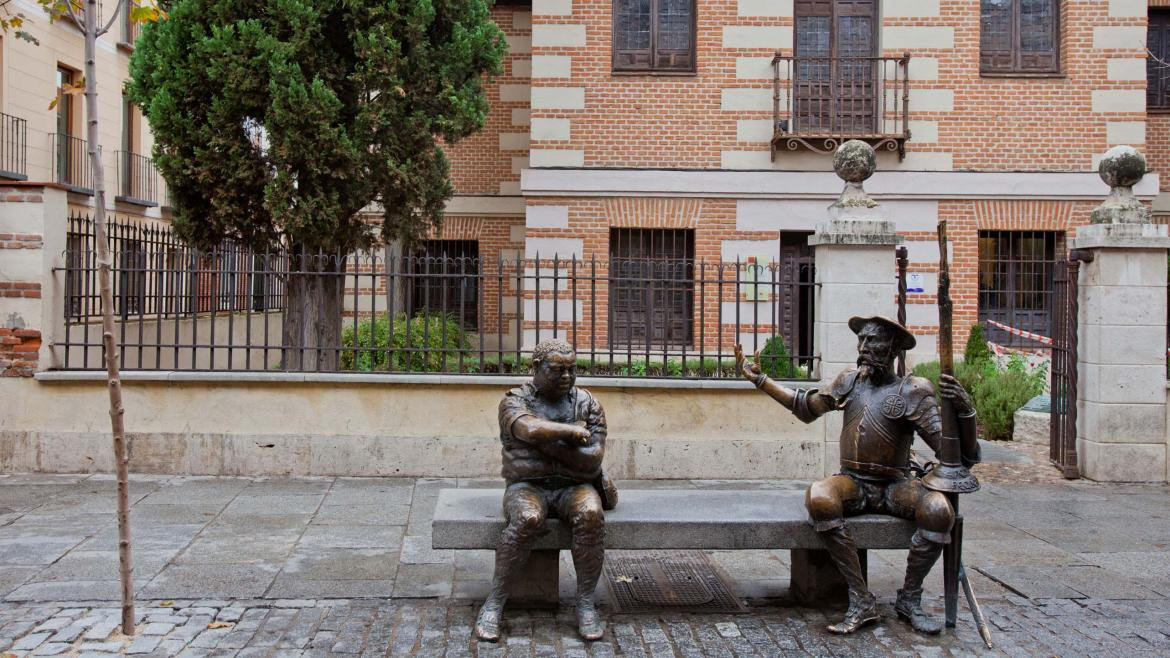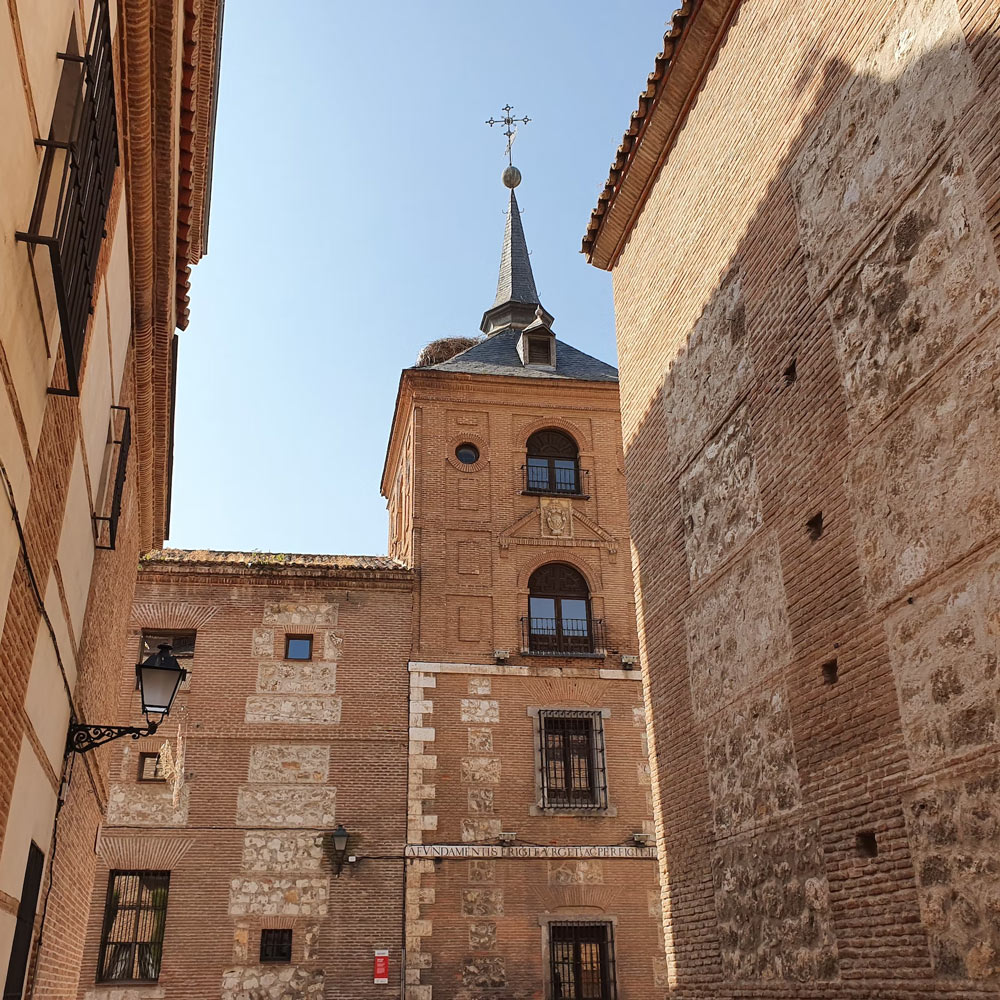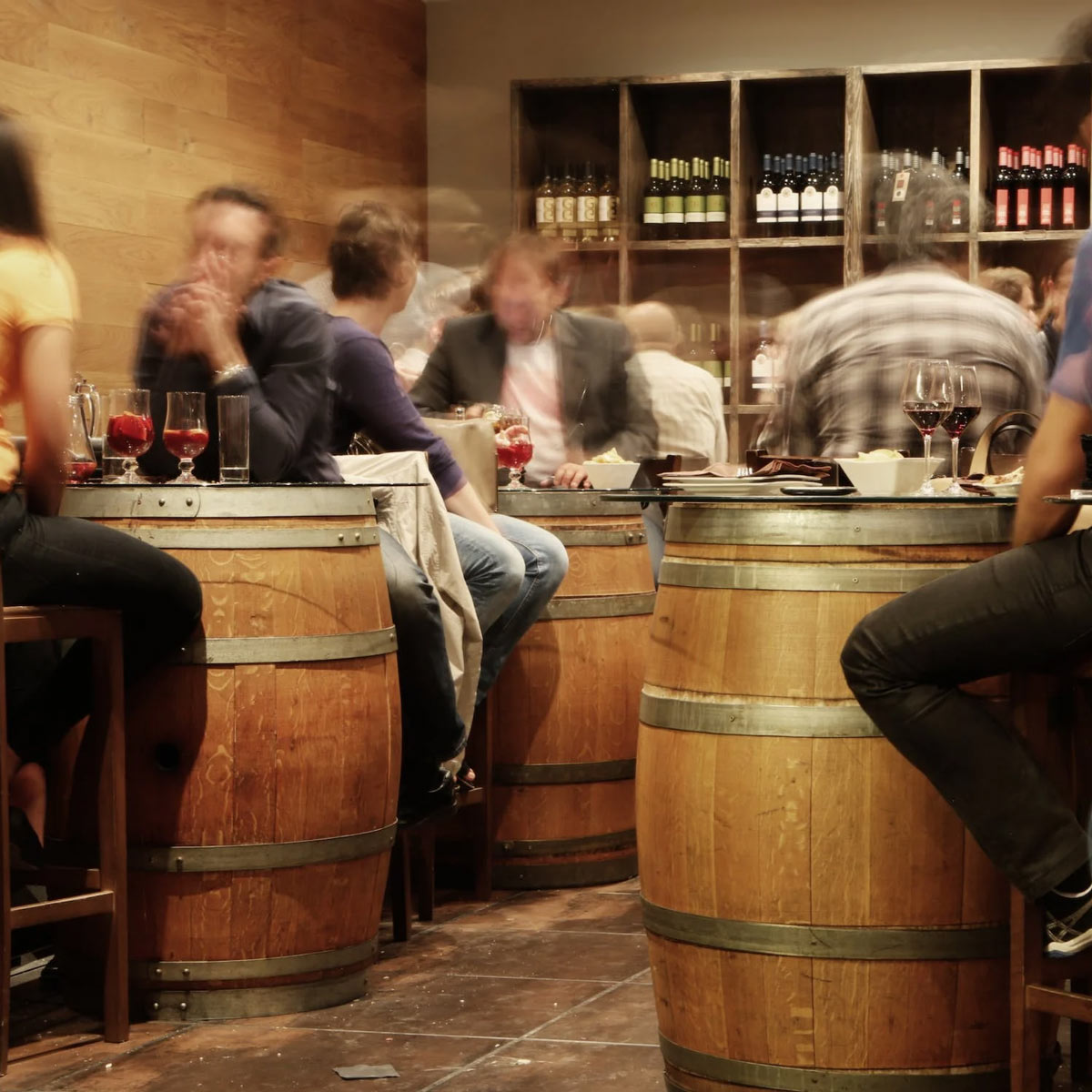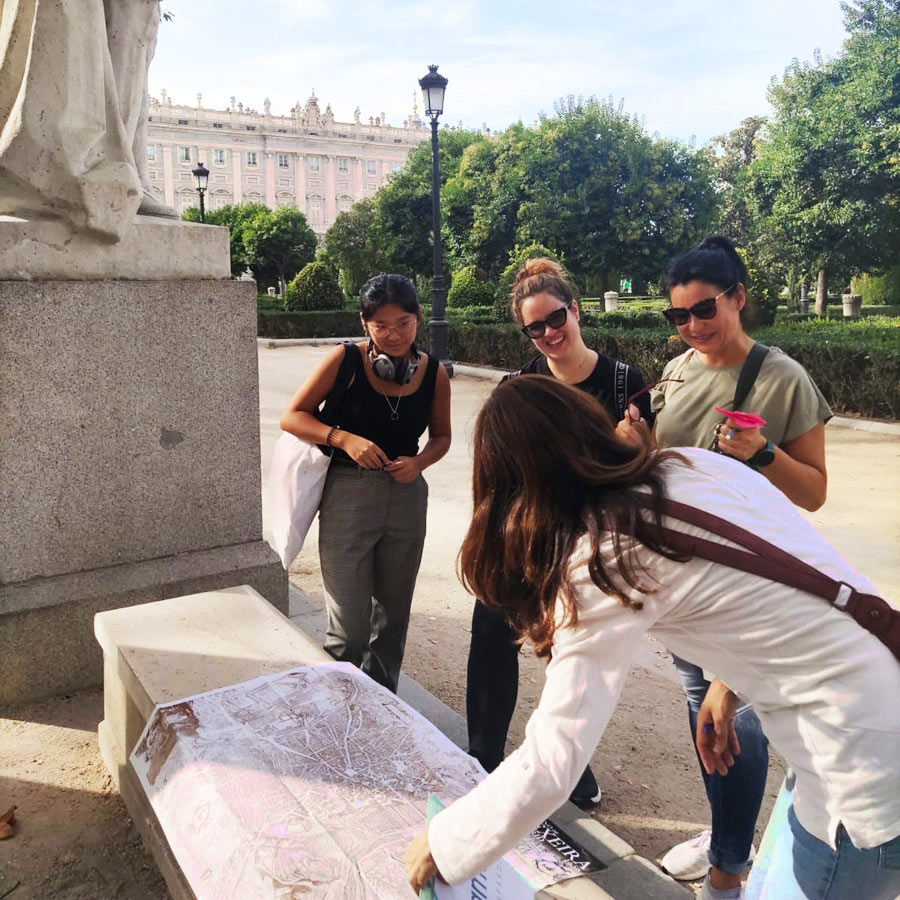“El Gordo” de la lotería
This is a custom heading element.
¿Quién no quiere algo de lotería del “Gordo”? Así es como los españoles llaman al sorteo extraordinario de lotería de Navidad: el Gordo.
El sorteo del Gordo se celebra el 22 de diciembre y es uno de los acontecimientos televisivos más esperados del año. El sorteo se retransmite en directo por La 1 (de Televisión Española) y en él participan dos enormes bombos: en uno de ellos se introducen 100.000 bolas con todos los números de lotería; en el otro bombo están todos los premios que se otorgan en este sorteo. A continuación, los bombos comienzan a girar y los alumnos del Colegio de San Ildefonso de Madrid sacan los números que luego cantan en voz alta para que todos los oigan. Uno de los niños canta el número y el otro canta el premio.
¿Cuánto cuestan los décimos del Gordo?
En cuanto a la cantidad de dinero jugada, se puede comprar un billete que cuesta 200 euros, o más comúnmente un décimo que cuesta, lógicamente, 20 euros. Mucha gente comparte un décimo con amigos o familiares, e incluso se intercambia reduciendo así el coste (puedes jugar más números, aunque menos cantidad de cada uno). Los números de cada décimo son una combinación de 5 cifras entre 00000 y 99999, lo que produce 100.000 números únicos (de ahí las 100.000 bolas del bombo). Evidentemente, se vende mucho más que este número de billetes, por lo que los billetes se producen en series, lo que significa que varias personas acaban teniendo los números ganadores y, por lo tanto, comparten el importe total.
Los décimos de lotería del Gordo están a la venta desde principios de julio (¡sí, julio!) y siempre hay un frenesí de gente dispuesta a hacer cola durante horas para conseguir el suyo en los puntos de venta más populares de todo el país. En Madrid, por ejemplo, la lotera más famosa es Doña Manolita, situada en pleno centro de la ciudad. En esta administración hay gente esperando fuera durante horas todos los días, semana tras semana, para comprar sus décimos, ya que la tienda ha vendido más números premiados, tanto para el Gordo (el premio principal) como para el resto de cantidades premiadas, más veces que ningún otro lugar de España. Cuando estés aquí aprendiendo español, deberías ir temprano a comprar un décimo, ¡quién sabe lo que puede pasar!
Los premios de la Lotería de Navidad
Los premios del Gordo son un poco complicados. Como hemos dicho en el párrafo anterior, el Gordo es en realidad el nombre del premio mayor en metálico. Oficialmente, la lotería se llama Sorteo Extraordinario de Navidad, pero todo el mundo utiliza el Gordo para referirse al mismo. He aquí un rápido desglose de los principales premios.
| Spanish | Prize amount |
| El gordo – Primer premio | €4,000,000 x 1 |
| Segundo premio | €1,250,000 x 1 |
| Tercer premio | €500,000 x 1 |
| Cuarto premio | €250,000 x 2 |
| Quinto premio | €60,000 x 8 |
| La pedrea | €1,000 x 1,794 (in 2022 at least) |
Además, hay todo tipo de combinaciones de premios, ¡sólo tienes que jugar y descubrirlo!
¿De dónde procede el Gordo?
La lotería de Navidad en España, en su forma actual, es una tradición que se remonta a 1812, cuando el país estaba en su mayor parte bajo dominio francés tras la invasión napoleónica. La ciudad de Cádiz, en el sur del país, era una de las pocas libres de los franceses y sede de lo que quedaba del gobierno independiente español. A un ministro, Ciriaco González Carvajal, se le ocurrió la idea como una forma de recaudar fondos para el gobierno, que necesitaba desesperadamente dinero para seguir luchando en la Guerra de la Independencia. El primer sorteo tuvo lugar el 18 de diciembre de 1812 en Cádiz y, cuando los españoles expulsaron a los franceses, se trasladó a la capital, Madrid, en 1814.
Desde su creación, la lotería de Navidad se ha sorteado todos los años, durante crisis económicas, catástrofes e incluso en la Guerra Civil de 1936-1939, cuando los dos bandos tuvieron sorteos separados. Es increíble la importancia que tiene el Gordo en España, y todo el mundo quiere ver el nuevo anuncio de la lotería de Navidad cuando se estrena en noviembre, ya que marca el inicio de la campaña previa a la Navidad.
Así que prepara tu cartera/monedero para cuando vengas a hacer tu curso de español en Madrid y compra uno o dos décimos: ¡puedes ser uno de los afortunados ganadores!
Hablamos - full-on Spanish!
Listening to music in Spanish
This is a custom heading element.
Escuchar a música (listening to music) is one of life’s great pleasures. It’s a fantastic way to aprender la cultura (learn about the culture) of the different countries around the world, and also a fantastic way to help you to learn a language. You can divertírte (enjoy yourself) and mejorar tu oído (improve your listening skills) at the same time – so let’s have a look at some different musical styles from around the Spanish-speaking world, and end with some useful vocabulary.
El flamenco
Obviously, you must have heard of el flamenco as it’s the most typical style of music and dance that people associate with Spain. Originating in Andalucía, a region in the south of Spain, it is un símbolo (a symbol) of Spanish culture to the outside world, despite the fact that it is only from one particular area.
There are three main parts to el flamenco – el cante (the singing element), el toque (the guitar playing and percussion aspects) and el baile (the dance). Each of these elements are crucial in making the whole flamenco experience truly come to life. During the dance, the bailaor/a (flamenco dancer) can be seen playing unas castañuelas (castanets) – a typical Spanish percussion instrument held in the hands and clicked together to make a very distinctive sound. Many bailaores/as (flamenco dancers) are estrellas (stars) in their own right, and we’d definitely recommend you go to un tablao (a flamenco venue) in Madrid when you’re here studying Spanish to see a full show. It’s an amazing spectacle and you’ll definitely leave feeling energised and wanting to see more!
El reguetón
You might have seen this type of music written as “reggaeton”, and that spelling also gives you a bit more of a clue as to its origins. Developed in Puerto Rico in the early 1990s, el reguetón is related to the world of reggae and hip-hop, as well as the more underground dancehall style.
This style is all about rapped lyrics, danceable tunes and a more club feeling than other types of music we’re talking about in this article. It’s proven to be extremely popular with young people throughout the Spanish-speaking world and you’ll hear it absolutely everywhere when you’re living in Madrid learning Spanish. An early pioneer of the género (genre) was Daddy Yankee, who you might well have heard of, and more recent stars include Bad Bunny and Karol G.
La bachata
You might not have heard of this one, but la bachata is a very popular style in Latin America which came from the República Dominicana (Dominican Republic) and extended throughout the Spanish-speaking world. It’s full of ritmo (rhythm) and life, and it also has its own set of dance moves. These are performed with una pareja (a partner) and the resulting dance is a sensual one – so perfect for if you’re on the lookout for a romantic evening!
La bachata uses all sorts of instruments, from guitarras (guitars) to el bongo (bongo drums) and saxofones (saxophones) which combine together to create its unique sound. Recently, la bachata was declared as Patrimonio de la Humanidad (Intangible culture of Humanity) by UNESCO. When you’re here in Madrid, there are plenty of clubs where you can hear this amazing style so make sure you take advantage of the opportunity!
La salsa
Another typical musical genre which we’re sure you’ve heard of, la salsa is actually a fusion of Cuban and American dances which first became popular in New York in the late 1960s. There, immigrants from various Latin American countries developed the first salsa tracks, along with the typical dance routines which accompany this type of music. Nowadays, there are a variety of different styles, from New York, to Colombian, Puerto Rican and the original Cuban.
Interestingly, the name la salsa is also the Spanish word for sauce, which quite accurately describes the mixture of cultures present in the music and dance moves of this genre. Like la bachata, the moves in la salsa are all about moving your cadera (hips) and hombros (shoulders) with lots of giros (spins) mixed in for good measure. There are lots of places in all Spanish-speaking countries where you can try out this dance style, and many clubs in Madrid have salsa evenings so you can learn the moves, practise your Spanish and have a great night too!
And there you have four typical music and dance styles from the Spanish-speaking world. So you can understand some of the language used when talking about music, here’s some useful vocabulary to help you.
Géneros musicales – Music genres
| Spanish | English |
| El flamenco | Flamenco |
| El reguetón | Reggaeton |
| La bachata | Bachata |
| La salsa | Salsa |
| El tango | Tango |
| El rock | Rock |
| La música pop | Pop |
| El jazz | Jazz |
| El hip-hop | Hip-hop |
| La música clásica | Classical music |
| La música country | Country music |
| La ópera | Opera |
| La música electrónica | Electronic music |
Instrumentos musicales – Musical instruments
| Spanish | English |
| El piano | Piano |
| La guitarra | Guitar |
| La batería | Drums |
| La trompeta | Trumpet |
| El saxofón | Saxophone |
| El violín | Violin |
| La flauta | Flute |
| El clarinete | Clarinet |
| El arpa | Harp |
| El órgano | Organ |
| Las castañuelas | Castanets |
| Los instrumentos de cuerda | String instruments |
| Los instrumentos de viento | Wind instruments |
| Los instrumentos de percusión | Percussion instruments |
Otro vocabulario – Other vocabulary
| Spanish | English |
| La letra | Lyrics |
| La canción | Song |
| El/La cantante | Singer |
| El bailaor/La bailaora | Flamenco dancer |
| El concierto | Concert |
| El músico | Musician |
| Cantar | To sing |
| Bailar | To dance |
| Oir | To hear |
| Escuchar | To listen |
Hablamos - full-on Spanish!
El Puente de Diciembre
This is a custom heading element.
Los festivos de España se publican cada mes de octubre para que todo el mundo sepa qué fechas debe marcar en el calendario como días libres durante el siguiente año. Por ley, puede haber hasta catorce días festivos oficiales, incluyendo los días nacionales y regionales. El gobierno central decide nueve de ellos, que son siempre los mismos, y los gobiernos regionales y los ayuntamientos pueden añadir hasta cinco más para completarlos.
Casi todo el mundo en el país espera con impaciencia dos fechas en particular: el 6 y el 8 de diciembre. ¿Por qué? Porque son dos días festivos que permiten disfrutar de ambos días libres en la misma semana, y que para mucha gente suponen también un puente. ¿Pero qué es eso? Pues bien, un puente significa que dos días de vacaciones están separados por un día laborable entre ellos, de modo que puedes tomarte ese día libre de trabajo y hacer una escapada de tres (o más) días. Desgraciadamente, no todo el mundo se beneficia de ello y algunas personas tienen que trabajar el día 7, aunque a todo el mundo le gustan los dos días libres. Veamos por qué estas fechas son importantes en el calendario festivo español.
El 6 de diciembre – Día de la Constitución
Como sabrás, o no, entre 1939 y 1975 España fue gobernada por el dictador Francisco Franco. A su muerte, hubo un periodo conocido como la Transición que duró, más o menos, hasta 1978, cuando la nueva constitución democrática fue sometida a referéndum y aprobada por el pueblo español el 6 de diciembre. Cada año, este importante hito se celebra con un festivo nacional, ya que esta constitución sigue vigente hasta hoy.
Durante el día de la Constitución se celebran numerosos actos en todo el país. Por ejemplo, en Madrid los soldados izarán la bandera en la Plaza de Colón al son del himno nacional y con la presencia de varios políticos de alto nivel. Además, en las calles del barrio de Barajas se celebra una carrera que rinde homenaje a la Constitución y que constituye un interesante evento local en sí mismo. En esta época del año, la ciudad también se prepara para la Navidad, por lo que en los días cercanos al 6 se organizan muchas actividades navideñas, como los mercados navideños que se celebran por toda la capital. Sin duda, un día para celebrar, ya que todos recordamos cómo volvió la democracia a España.
El 8 de diciembre – Día de la Inmaculada Concepción
La otra fecha importante de esta semana es el día 8, en el que se celebra la Inmaculada Concepción de la virgen María, madre de Jesús. Para los cristianos, es un día excepcionalmente importante, ya que se celebra que María, desde el momento en que fue concebida por sus padres, por gracia y privilegios únicos que Dios le concedió, fue preservada de toda mancha del pecado original.
Mucha gente acude a la misa para celebrar el día, y es, según la tradición eclesiástica, la única ocasión en que el sacerdote puede llevar vestimenta azul. Para las personas no religiosas, es simplemente otro día de fiesta y una oportunidad para descansar y relajarse, o simplemente salir y disfrutar de algunas de las atracciones cercanas al lugar donde viven.
Cuando vengas a Madrid a aprender español, todas estas fiestas serán una gran oportunidad para salir y sumergirte en la cultura española. Siempre hay algo destacable en cada fiesta especial y puedes aprender mucho sobre la historia, la gente y las tradiciones del país acudiendo a los diferentes eventos. Si haces un curso en Hablamos, verás que organizamos muchas actividades culturales, así que anímate a unirte a nosotros y comienza tus estudios de español hoy mismo.
Hablamos - full-on Spanish!
Puente de Diciembre
This is a custom heading element.
Spain’s festivos (public holidays) are published every October to let everyone know which dates to mark on the calendar as a day off during the next year. By law, there can be up to 14 official holidays including both national and regional days. The central government decides on 9 of these, which are always the same, and the regional governments and local councils can add up to 5 more to make up the full amount.
Pretty much everyone in the country looks forward to two dates in particular – the 6<th and the 8th of December. Why? Because they’re two festivos (bank/public holidays) which mean you get both days off work in the same week, and for a lot of people also make un puente. But what’s that? Well, un puente (a bridge) means when two holiday days are separated by a normal day between them so that you can take an extra day off work in the middle and make a three (or more!) day break. Unfortunately, not everybody benefits from this and some people have to work on the 7th, even still, everyone likes two days off! Let’s have a look as to why these dates are important in the Spanish holiday calendar.
El 6 de diciembre – Día de la constitución
As you may, or may not, know, from 1939-1975 Spain was ruled by the dictador (dictator) Francisco Franco. When he died, there was a period known as la transición (the transition) which lasted, more or less, until 1978 when the new democratic constitución (constitution) was put to a referendum and approved by the Spanish people on the 6th of December. Each year, this important hito (event) is marked with a festivo nacional (national holiday) as this constitution is still in force to this day.
During el día de la constitución (Constitution Day) there are numerous events which take place around the country. For instance, in Madrid soldiers izar la bandera (raise the flag) in the Plaza de Colón (Columbus Square) to the sound of the himno nacional (national anthem) and with the presence of various high-level politicians. Also, in the Barajas neighbourhood there’s a carrera (race) through the streets which pays homage to the Constitution and makes for an interesting local event in itself. The city tends to be getting ready for la navidad (Christmas) at this time of year too, so lots of Christmassy activities get going on the days around the 6th such as the mercados navideños (Christmas markets) all around the capital. Definitely a day to celebrate as we all remember how democracy returned to Spain.
El 8 de diciembre – Día de la inmaculada concepción
The other important fecha (date) during this week is the 8th, on which we celebrate the Immaculate Conception of la virgen María, madre de Jesús (The Virgin Mary, mother of Jesus). For cristianos (Christians), this is an exceptionally important day as it is when Santa Ana (Saint Anne), the mother of María (Mary), fell pregnant and God preserved Mary from the stain of original sin. As such, María (Mary) is free from pecado (sin) and could then go on to give birth to Jesus.
On this day, many people go to misa (mass) to mark the day, and it is, according to Church tradition, the only day on which the cura (priest) may wear vestimento azul (blue robes). For non-religious people, the day is simply another holiday and a chance to rest and relax, or just get out and enjoy some of the attractions around where they live.
When you come to Madrid to learn Spanish, all of these festivos are a great opportunity to go out and immerse yourself in Spanish culture. There’s always something happening on every special holiday and you can learn so much about the history, the people and the traditions of the country by going to the different events. If you take a course at 우리는 말한다, we arrange lots of cultural activities so come and join us and start you Spanish studies with us today!
Hablamos - full-on Spanish!
Los Museos Municipales de Madrid
This is a custom heading element.
Con el curso de español para extranjeros de 우리는 말한다 y las actividades culturales celebradas cada viernes conocerás a fondo Madrid, lugares de interés populares y desconocidos. Las actividades culturales de Hablamos se desarrollan al aire libre, en museos, bares, en salas de exposiciones de la ciudad, excursiones cercanas…
En esta ocasión te queremos presentar una oferta cultural alternativa y desconocida: un recorrido por los tres museos municipales que tiene Madrid, que cuentan la historia de Madrid a través de la colección artística que albergan.
El Museo de San Isidro o Museo de los Orígenes
l primero es el Museo de San Isidro, situado en el barrio de La Latina, también conocido como el Museo de los Orígenes, es ideal para conocer la historia de Madrid desde sus orígenes más remotos en la Prehistoria hasta el establecimiento de la Corte en Madrid. El Valle del Manzanares, donde está ubicada la ciudad, fue ocupado por el hombre desde el Paleolítico Inferior. La colección de piezas arqueológicas de este museo nos permite conocer aspectos de época romana y visigoda, así como la evolución de la ciudad desde la primitiva medina musulmana del siglo IX hasta el reinado de Felipe II.
El barrio de La Latina es de los más viejos y atractivos de Madrid. Sus calles conservan el trazado que ya tuvieron hace siglos. Algunos de sus nombres (puerta de Moros, plaza de la Cebada, calle de la Morería, la propia Latina) nos trasladan a un tiempo en que esta zona era el verdadero centro de la vida en la ciudad. El nombre del barrio se debe a doña Beatriz Galindo, humanista y dama de confianza de la reina Isabel I de Castilla, la conocida como la Reina Católica de España. A Beatriz Galindo la llamaban la Latina por ser maestra de latín de la reina y sus hijas. A ella se debe la fundación del hospital de la Latina en el solar donde hoy se encuentra el Teatro La Latina.
Museo de Historia de Madrid
El segundo museo es la continuación histórica del primero. Se trata del Museo de Historia de Madrid. El museo está instalado en el antiguo Hospicio de Madrid, edificio construido por Pedro de Ribera, es una obra maestra del Barroco español. Con la colección artística que muestra este museo se explica la evolución de la ciudad desde su transformación en Corte de la monarquía española en 1561 hasta convertirse en una ciudad moderna, industriosa y cosmopolita en las primeras décadas del siglo XX. Además, el museo cuenta con la obra de Goya “Alegoría de Madrid” y una de las maquetas más importantes de Europa: “Modelo de Madrid. 1830”, de un incalculable valor documental por su detalle y precisión. El Museo de Historia de Madrid está situado en Malasaña, en la calle Fuencarral 78.
El barrio madrileño de Malasaña se ha convertido en uno de los puntos neurálgicos de la ciudad. Paseando entre sus calles seguro que encontrarás un plan gracias a su variada propuesta tanto de gastronomía, como de originales tiendas y de bares de copas que fueron claves en la época de la Movida Madrileña de los 80 y lo siguen siendo hoy en día en el ocio nocturno de Madrid.
Museo de Arte Contemporáneo de Madrid
El tercer museo municipal es el Museo de Arte Contemporáneo de Madrid, situado en el Centro de Cultura Contemporánea Conde Duque. El MACM posee un amplio catálogo de obras de diferentes movimientos: desde las vanguardias históricas hasta las corrientes contemporáneas de los Esquizos y La Movida madrileña. El peso que en este espacio artístico tiene la figura del escritor Ramón Gómez de la Serna, nos permite acercarnos al gran cambio que se produjo en España del siglo XIX al XX y a conocer mejor aspectos concretos como: la Generación del 14, Las Vanguardias, La Primera Guerra Mundial o la Guerra Civil española.
El Centro de Cultura Contemporánea Conde Duque es un espacio cultural desconocido situado en el edificio del antiguo Cuartel de Conde Duque, uno de los de más larga historia en Madrid. Construido a principios del siglo XVIII, para alojar a las Reales Guardias de Corps, es una obra de uno de los arquitectos más importantes del barroco madrileño, Pedro de Ribera (el mismo arquitecto del edificio que hoy alberga el Museo de Historia de Madrid) Los espacios de este gran edificio están organizados a través de tres grandes patios. Allí se localizan varias instituciones como: el Archivo de Villa, la Biblioteca Digital Memoria de Madrid, la Biblioteca Histórica, la Biblioteca Pública Benito Pérez Galdós, la Biblioteca Pública Conde Duque, la Hemeroteca Municipal y el mencionado más arriba Museo de Arte Contemporáneo de Madrid. Además, tiene otros espacios dedicados a la exhibición de manifestaciones artísticas relacionadas con el mundo de la escena, la música y las exposiciones: auditorio, teatro, salón de actos, salas de danza y varias salas de exposiciones.
Esta oferta cultural y otros lugares especiales te esperan en el curso de español para extranjeros de 우리는 말한다. Podrás conocer con más gente y disfrutar de estos espacios, rincones y otras muchas actividades culturales más.
Aprende el español de forma original y divertida, disfrutando de la ciudad de Madrid, y compartiendo con gente que como tú quiere aprender español. Si lo que buscas es un curso de español en Madrid para extranjeros diferente, no lo dudes y apúntate a 우리는 말한다.
¡Te esperamos! Hablamos - full-on Spanish!
Spanish cities – Alcalá de Henares
This is a custom heading element.
Now you’re in Madrid studying Spanish, it’s about time you got out and saw some of the other amazing places near the capital filled with sitios de interés (interesting sites) to get more of a flavour of Spanish culture. The ciudad (city) of Alcalá de Henares is a must-see when you’re living and studying in Madrid. It is, like Segovia which featured in one of our previous blogs, classed as patrimonio de la humanidad (a World Heritage Site) and is the lugar de nacimiento (birthplace) of Miguel de Cervantes who authored the famous novel El ingenioso hidalgo Don Quijote de la Mancha.
The city of Alcalá de Henares takes its name from the Moorish defensive settlement which was built in the pre-exiting town dating from prehistoric times. Nowadays, the city is the third biggest settlement in the Comunidad de Madrid (Madrid region) and an important university town. Let’s take a look at what there is to see and do there.
Visitar la casa natal de Miguel de Cervantes – Visit Miguel de Cervante’s birthplace
If you’re taking an excursión (excursion/trip) to Alcalá, you’ve absolutely got to go and see the home of the author Miguel de Cervantes. Located on the beautiful Calle Mayor (Main Street), the house is now a museo dedicated to the author’s life and connection with the city. Also, right in front of the building is un banco (a bench) with bronze statues of the main characters from the novel Don Quijote – the man himself and his famous sidekick Sancho Panza. Take a moment to sit next to them and sacar una foto (take a picture) to show all your classmates in your Spanish lessons!

Dar un paseo por Calle Mayor – Take a stroll down Calle Mayor
In order to reach Cervante’s house, you’ll need to dar un paseo (take a walk) down the famous Calle Mayor in the city centre. This street is extremely well-maintained, and is in fact the longest calle soportalada (street with colonnades) in Europe! It’s full of tiendas (shops), bares (bars) and cafeterías (cafés) to buy some recuerdos (souvenirs) or tomar algo (have something to eat or drink). A bonus is that you’ll get to speak Spanish with some locals while you’re there and impress them with what you’ve learned in your Spanish classes.
Pasar un rato en la plaza de Cervantes – Spend some time in the Plaza de Cervantes
The central square, la plaza de Cervantes, is about halfway down Calle Mayor and serves as a focal point for all the fiestas (festivals) which take place in the city each year. The most important fiesta is the Ferias de Alcalá de Henares which takes place every August for one week. There are all sorts of activities during this time, including lots of conciertos en directo (live concerts) and the curious pasacalles de Gigantes y Cabezudos (the parade of the giants and big heads). Hundreds of massive marionetas (puppets) representing different historical people and cultural figures are marched through the streets of the city accompanied by the sounds of traditional music. It’s a great way to see some authentic Spanish culture in action so don’t miss it on your stay here learning Spanish.
Ir a ver la sede de la Universidad de Alcalá – Go and see the University of Alcalá
In the Plaza de San Diego, just off plaza de Cervantes, you’ll find what is today the central offices of the Universidad de Alcalá. This university, fundada (founded) in 1499 by Cardenal Cisneros, a famous Spanish cardinal, is housed in some of the most spectacular buildings in the city. In fact, the Universidad Complutense de Madrid is actually, due to various historical reasons, the continuation of the original school from 1499 but the Universidad de Alcalá was re-launched in the 1970s and occupies the original school’s buildings. It’s definitely worth hacer una visita guiada (taking a guided tour) of the university’s main faculties as they are all architecturally interesting. Also, once you’ve been studying Spanish for a while you might decide to go and do a carrera (degree) there as it’s a prestigious educational institution.
¡Tapear!
Obviously, all the walking you’ll be doing around Alcalá will mean that at some point you’ll fancy something para comer (to eat). Alcalá de Henares, like pretty much any Spanish city, has hundreds of bars and restaurants where you can try all the different local tapas (small dishes). We’d recommend gambas al ajillo (prawns in garlic oil) or maybe some migas al pastor (breadcrumbs with chorizo sausage, pancetta and paprika) – ¡delicioso!
That’s just a few of the things Alcalá de Henares has to offer, so when you come to take a Spanish course here at 우리는 말한다, we definitely recommend visiting and seeing for yourself this amazing medieval city.
Hablamos - full-on Spanish!
Tapas y tabernas en Madrid
This is a custom heading element.
Aprende español de forma original y amena. El curso de español para extranjeros de Hablamos incluye actividades culturales y sociales enfocadas a aprender español: su idioma y su cultura, sus gentes y sus costumbres.
Hoy queremos contarte la historia de la tapa, ¿sabes cuál es su origen?, ¿conoces las tapas más habituales que se sirven en Madrid?
La tapa es una porción de comida que se ofrece junto con la bebida solicitada. El origen de esta costumbre, según algunos, está en una disposición del rey Alfonso X el Sabio que obligaba a los taberneros a servir el vaso de vino acompañado de una rodaja de pan con embutido. Al servir la bebida la rebanada de pan se colocaba sobre el vaso, tapándolo, y de ahí el nombre de la tapa.
Hay quien opina que la costumbre procede de otra disposición regia que obligaba a los venteros a servir el vino acompañado de una porción de comida porque, al parecer, los cocheros de las diligencias eran muy aficionados al vino y por este motivo eran muy frecuentes los accidentes. Acompañando el vino con alimentos se pretendía rebajar los efectos del alcohol, para evitar vuelcos u otros percances. Con todo, la mayoría de los especialistas sitúan el origen de la tapa en Andalucía en el último tercio del siglo XIX. A mediados del siglo XX, en la época del desarrollismo industrial, es cuando la costumbre de la tapa se generaliza en toda España.
En Madrid, las tapas más habituales
-Los callos: plato de origen medieval a base de tripas de vaca. Fue comida de pobres hasta que en el siglo XIX lo adoptó la burguesía.
-La tortilla española: surge en el siglo XVI. La actual modalidad proviene de una aldea navarra. La receta más apreciada sugiere freír las patatas a fuego suave, añadirlas a los huevos batidos y cuajar a la plancha por ambos lados.
-Las croquetas: palabra francesa, croquer: morder. Unas porciones cilíndricas de masa de harina y leche. La masa suele enriquecerse con carne de ave, jamón, huevo duro o gambas. Se reboza con huevo batido y pan rallado y se fríe a fuego lento.
-Los caracoles: otro alimento de pobres que acabó encantando a los ricos. Los mejores son los procedentes de viñedos. Dado lo trabajoso de su limpieza, hoy está tapa escasea en las barras.
-Bacalao rebozado: desde que en el siglo XVIII los vascos comenzaron a pescar el bacalao, este ha sido el manjar perfecto en las tabernas. El bacalao rebozado es posiblemente de origen andaluz.
-Los escabeches: el atún y las sardinas en vinagre proceden de antiguas recetas árabes. A partir del siglo XIV, los escabecheros preparan esta conserva en los puertos y la envían a las tabernas de Madrid en barriles de madera. Los boquerones en vinagre son una derivación de los escabeches.
-Los bocatas y bocatines: Felipe II y Carlos III ya encargaban a sus cocineros toda clase de bocadillos. Hoy, los bocatas de calamares hacen furor en los bares del casco viejo de Madrid.
Otras tapas características de nuestras tabernas
Las albóndigas, las banderillas, las Gildas, las anchoas, la paella, las empanadillas, el bacalao en salazón, las anchoas, las gambas, los pepinillos, el queso manchego o de campo real, el jamón, el fiambre, los torreznos, las patatas bravas, las patatas alioli, las patatas cocidas en ensalada, los garbanzos guisados o aliñados, la oreja de cerdo, la morcilla, las migas, las tacitas de caldo o consomé madrileño, los calamares fritos, el pescadito frito, el pisto…
A mediados el siglo XIX, las tabernas se convierten en los centros de reunión de los muchos campesinos que llegan a la ciudad en busca de una vida mejor. Las tascas adoptan la personalidad y la gastronomía de las regiones de las que proceden sus taberneros. La fusión de las cocinas españolas enriquece la cocina manchega que era la característica de nuestra ciudad creando la gastronomía madrileña. A comienzos del siglo XX Madrid cuenta con cerca de 1500 tabernas.
Las tabernas históricas de Madrid son un importante patrimonio cultural. Visitarlas y disfrutar con este legado cultural y gastronómico es una buena manera de asegurar su continuidad. Para ello recomendamos el libro de Tabernas y Tapas en Madrid de Carlos Osorio. Una guía amena, llena de datos y curiosidades, en la que se cuenta la historia de las tabernas madrileñas.
Las tabernas tradicionales, no solo eran lugares donde se servía alcohol, sobre todo eran centros de sociabilización, de encuentro y de reunión. También en las tabernas se servían desayunos y meriendas. El desayuno más habitual solía ser la infusión de té, seguido por el chocolate y el café.
El té, pese a toda su leyenda exótica y aristocrática, era el desayuno de los obreros que lo tomaban solo con aguardiente. Para acompañar la bebida caliente se servían churros, porras y buñuelos. En el siglo XX se puso de moda la media tostada, panecillo abierto por la mitad y tostado con mantequilla. El chocolate ha causado furor en los madrileños desde el descubrimiento de América.
La Puerta del Sol acogió durante el siglo XIX a chocolateros que vendían la bebida caliente durante toda la noche. Probablemente aquí radica la costumbre de los madrileños de tomar churros a horas nocturnas y, especialmente, en la última noche del año. Otras meriendas dulces eran las torrijas, los buñuelos, el bartolillo, los barquillos, los pestiños o las rosquillas de la tía Javiera o también llamadas de San Isidro (rosquillas con costra de azúcar y limón) Estas meriendas dulces se acompañaban de infusiones, café, chocolate o vinos dulces como el moscatel.
Esperamos que hayas disfrutado con esta pincelada de historia y cultura madrileña.
Aprende español de una manera sencilla y enriquecedora. Con Hablamos y las actividades culturales celebradas cada viernes conocerás a fondo Madrid, su cultura, sus lugares históricos, sus gentes y sus costumbres.
¡Te esperamos! Hablamos - full-on Spanish!
Future forms – How to talk about the future in Spanish
This is a custom heading element.
Knowing how to talk about el futuro (the future) in any language is obviously very important. Without it, you won’t be able to discuss your future plans for studying Spanish, or tell anyone about all the great adventures you’ve got planned! When speaking Spanish, we need to learn the main ways of forming sentences about the future.
El futuro simple
| Ver Type | Endings | English Pronoun |
| -AR Hablar Hablar Hablar Hablar Hablar Hablar |
– é ás á emos éis án |
– I You He, she, you (polite), it We You plural They, you (plural polite) |
| -ER Vender Vender Vender Vender Vender Vender |
– é ás á emos éis án |
– I You He, she, you (polite), it We You plural They, you (plural polite) |
| -IR Vivir Vivir Vivir Vivir Vivir Vivir |
– é ás á emos éis án |
– I You He, she, you (polite), it We You plural They, you (plural polite) |
This is the main way of expressing future ideas in Spanish when we want to speak about the future in general terms, or to say what is going to happen in the future without specifying an exact time. You probably remember from some of our other blogs on the 우리는 말한다 site that there are three main types of verbs in Spanish – -ar, -er and –ir endings. To form the futuro simple, we take el infinitive (the infinitive) of the verb and add the following endings directly onto it.
That’s it! So now you can start making sentences in the future in Spanish like these examples below:
Hablaremos del tema más tarde porque ahora no es el momento – We’ll talk about that topic later because now isn’t the time
Viviré mucho tiempo en Madrid – I will live in Madrid for a long time
Venderá el coche en algún momento – He/She will sell the car at some point
But, like with all tenses when learning Spanish, or any other language, there are exceptions. A lot of the most useful verbs are actually irregular in the futuro simple. Here are the most common ones:
| IRREGULAR VERB STEMS (ENDINGS ARE SAME AS IN PREVIOUS TABLE) | |
| dir (decir) To say har (hacer) To do/make podr (poder) To be able to pondr (poner) To put querr (querer) To want sabr (saber) To know |
saldr (salir) To leave/go out tendr (tener) To have vendr (venir) To come habr (haber) To have/Auxiliary verb cabr (caber) To fit valdr (valer) To be worth |
With the irregular verbs, you still put on the same endings as with regular ones. For example:
Mañana vendrá mi hermana e iremos al cine – My sister is coming tomorrow and we’re going to the cinema
Tendrán mucho curro al abrir la nueva tienda – They’ll have a lot of work when the new shop opens
That’s all there is to it! Now you can explain yourself and your future plans in Spanish with ease! There’s also another future form which we need to have a little look at too, so let’s continue.
Ir + a + infinitivo
This construction is going to allow you to talk about things in the future that are happening almost immediately, or which are going to happen fairly soon. It’s a bit like “Going to” in English to give you an idea of a near equivalent. Here’s a table to show you the construction and a few examples.
| IR | + A | + INFINITIVE | TO GO | + INFINITIVE |
| Voy | a | hablar | I am going | to speak |
| Vas | a | vender | You are going | to sell |
| Va | a | vivir | He/she is going | to live |
| Vamos | a | nadar | We are going | to swim |
| Vais | a | ver | You (pl) are going | to see |
| Van | a | llegar | They are going | to arrive |
Seriously, it really is that easy! You simply replace the verbo (verb) in the infinitive column with whichever other one you want to say. No exceptions, no strange spelling changes, nada de nada (nothing at all).
The only thing left to do now is to learn the endings, memorise the exceptions and start speaking Spanish to make sure you get lots of practice in talking about the future. Here at 우리는 말한다 we can give you lots of opportunities to practise this, and other, grammar points in our fun, interactive presential and online classes.
Hablamos - full-on Spanish!
Mantenerse en forma - Keeping fit
This is a custom heading element.
It might be getting colder now, and you might now want to salir a la calle (going out into the street) to do your usual exercise routine, but that’s not excuse to not estar en forma (be in shape). Let’s take a look at some places where you can hacer ejercicio (do exercise) and the activities available there.
Apúntate a un gimnasio – Sign up to a gym
In otoño (autumn) and invierno (winter) this could be a good option instead of having to exercise outdoors. Having said that, here in Madrid, when you come and learn Spanish, you’ll find that it almost always hace buen tiempo (is good weather) so you could go a correr (out for a run) in pretty much any month of the year!
But, if you do fancy joining a gym, you might need some gym and exercise related vocabulary to get you started. Here are some words and phrases.
| Spanish | English |
| Matricularse | Sign up |
| ¿Cuánto cuesta apuntarse? | How much does it cost to join up? |
| Ser socio de un gimnasio | Be a member of a gym |
| Hacer un circuito | To do a circuit |
| Las máquinas | Machines (in a gym) |
| Hacer una sesión de ejercicio | To do a work-out session |
| Calentar | Warm up |
| Entrenar | To train |
| Estirar | To stretch |
| Sentadillas (f) | Squats |
| Flexiones (f) | Push-ups |
| Planchas (f) | Planks |
| Zancadas (f) | Lunges |
| Levantar pesas | To lift weights |
| Monitor (m) | Monitor/Gym assistant |
| Entrenador(a) personal (m/f) | Personal trainer |
Now, there’s no excusa (excuse) to get yourself down to your local gym and start levantando pesas (pumping iron)!
Most gyms also offer clases (classes) of various activities too, so there’s always something you can do there even if using the machines isn’t your thing. You can also hacer natación (go swimming) at the bigger gyms, as well as relax after your exercise in their balneario (spa). A gym is also a great place to hablar en español (speak in Spanish) as you’ll probably need to ask for instructions on how to use the machines, or simply to interact with the other people in your gym classes. Exercise and learning – a great combination!
Ejercicio al aire libre – Outdoor exercise
Like we said before, especially here in Madrid and further south, the weather in most of Spain means when you’re here studying Spanish you can get outside most of the year to do some exercise. As 우리는 말한다 is based in Madrid, we know this city better and we’d say that you can correr (run) around one of the many parques verdes (green parks/spaces) that the city has to offer.
Apart from inner city activities, the huge amounts of campo (countryside) near Madrid are perfect para dar un paseo (to go for a walk) or hacer trekking (go trekking/hiking). For the more adventurous of you out there, you could do a spot of barranquismo (canyoning/canyoneering) in one of the many valles (valleys) in the region. The Comunidad de Madrid and Castilla y León regions are also known for their mountainous areas, so getting out to escalar (climb) is another way of keeping fit and seeing all the gorgeous countryside.
En tu propia casa – In your own home
Even if you’re learning Spanish online, or no tienes ganas de salir de casa (you can’t be bothered to leave your house), you can still be immersed in Spanish and keep fit from the comfort of your own salón (living room). All you need to get started is una esterilla de yoga (a yoga mat) and a video on YouTube and you can get into some funny posturas (positions) without anyone having to see you! Nowadays, there are even entire planes de ejercicio (exercise plans) available to watch online which require only a mat and maybe a little bit of equipment.
En total (in conclusion), there’s simply no reason nowadays not to mantenerte en forma (keep in shape) given the multiple options available to you. We at 우리는 말한다 think that it’s important to keep your mind and body in top condition, so we hope that these suggestions will be useful to you when you’re here on one of our Spanish courses to give you plenty to do in your free time.
Hablamos - full-on Spanish!
Un curso diferente de español en Madrid para extranjeros
This is a custom heading element.
Encuentra en Hablamos un curso de español para extranjeros especial que incluye actividades culturales para conocer y disfrutar la ciudad de Madrid como no lo hubieras imaginado.
Aprende el español de forma original, paseando por las calles de Madrid y visitando sus museos.
El objetivo del curso de español para extranjeros de Hablamos y su oferta cultural es que puedas aprender español con todos los recursos que ofrece la ciudad de Madrid y con sus profesionales multidisciplinares.
Las actividades culturales de Hablamos tienen lugar al aire libre, en museos y en exposiciones de la ciudad. Hoy queremos presentarte una nota histórica de algunos rincones de Madrid, son paseos especiales que te esperan en la oferta cultural del curso de español para extranjeros de Hablamos:
EL PASEO DEL PRADO
El Paseo de Prado fue una zona de prados y huertas que se fue transformando en un símbolo ilustrado y científico del siglo XVIII en España. Además, fue lugar de recreo y celebración de fiestas de madrileños durante siglos. Un paseo imprescindible para entender el desarrollo de la ciudad de Madrid a principios del siglo XX.
EL PASEO DE RECOLETOS
En el conocido Paseo de Recoletos están las mejores muestras de arquitectura palaciega del siglo XIX, además, es un buen rincón de Madrid para entender gran parte de los principales cambios que se produjeron en la ciudad con la llegada del siglo XX.
EL BARRIO DE HUERTAS
El siglo XVII es el siglo de Oro de las artes y las letras españolas. En el barrio de Huertas vivieron sus grandes figuras: Cervantes, Lope de Vega, Quevedo, Calderón de la Barca o Tirso de Molina entre muchos otros. El género más famoso de la literatura de este siglo es el teatro, despertando gran pasión en toda la sociedad del siglo XVII. En este barrio, en sus famosos Corrales de Comedias, se estrenaron la mayoría y más importantes obras de la literatura clásica.
EL BARRIO DE MALASAÑA
Malasaña es un barrio de marcado carácter castizo, cuenta con destacadas muestras arquitectónicas del siglo XVIII, fue escenario en la Guerra de la Independencia e icono de la movida madrileña en los 80. Este barrio es fundamental para entender la historia del desarrollo urbano de Madrid y de sus gentes.
EL BARRIO DE LAVAPIÉS
Las calles de este barrio castizo de Madrid nos hablan de hechos, fábulas, leyendas y, sobre todo, de mucha historia. Igual que en el pasado convivieron armónicamente cristianos viejos y conversos, hoy es un barrio que destaca principalmente por su multiculturalidad.
BARRIO DE CHAMBERÍ
Alonso Martínez y Chueca. Aunque los orígenes de esta zona de Madrid se remontan al siglo XVI y a las primeras industrias artesanales, no es hasta el siglo XIX que adquiere su forma actual. Este barrio resulta ser una buena síntesis de la evolución e historia de la ciudad de Madrid en su conjunto.
EL PARQUE DEL RETIRO
El antiguo Real Sitio del Buen Retiro, creado en el siglo XVII, fue un complejo palacial formado por palacio y jardines. Fue segunda residencia del rey y lugar de recreo y diversión. El conjunto del palacio ha desaparecido casi por completo, quedando tan solo parte de sus jardines. Aunque hoy pueda parecer mentira, en sus bosques se cazaban venados y se navegaba en góndolas por sus canales.
EL PARQUE DEL OESTE
Gran parte de la historia del siglo XX de España se condensa en esta sesión que os proponemos por el noroeste de Madrid: Moncloa- Ciudad Universitaria. Pasear por este distrito es acercarnos a los proyectos y a la mentalidad modernizadora de los años 20 y 30. En el Parque del Oeste aún se pueden observar diferentes vestigios de la Guerra Civil española y el mayor ejemplo de arquitectura oficial de posguerra que pueda encontrarse en la ciudad.
EL PARQUE DE EL CAPRICHO
Se encuentra en la Alameda de Osuna, al nordeste de la ciudad, y cuenta con una superficie de 14 hectáreas. Está considerado uno de los parques más bellos de la ciudad. Como su propio nombre indica, es un capricho que la Duquesa de Osuna (1752-1834) mandó construir a finales del siglo XVIII en las afueras de Madrid, en el camino de Aragón. La Duquesa fue una de las damas más populares de la época del romanticismo español. Fue mecenas de artistas de aquella época como Goya, con el que siempre mantuvo una excelente y estrecha relación. El Capricho es un bello lugar de recreo, descanso, de fiestas y banquetes de la alta alcurnia.
CASTILLO DE LA ALAMEDA
A finales del siglo XIV, en el valle del Jarama, se construyó una residencia fortificada feudal que se convertirá más tarde en un Palacio Renacentista. El conjunto histórico de este lugar lo completan restos de un poblado prehistórico, el panteón de la Familia Fernán Núñez y un nido de ametralladoras de la Guerra Civil. El Castillo de la Alameda, el castillo de Madrid, resulta ser un enclave arqueológico síntesis de la Historia de Madrid.
Disfruta de estos lugares, rincones y otras muchas actividades culturales más.Si lo que buscas es un curso de español en Madrid para extranjeros diferente no lo dudes y apúntate a Hablamos.
Aprende el español de una manera amena y sencilla.
Con Hablamos y las actividades culturales celebradas cada viernes conocerás a fondo Madrid: lugares históricos, otros que habitualmente pasan desapercibidos, museos mundialmente famosos y otros poco conocidos.











